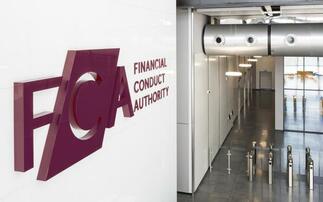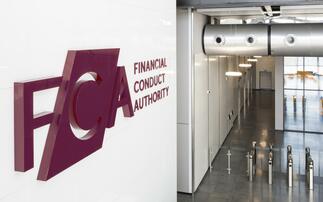
Asset managers can adopt one of the four SDR labels – Sustainability Impact, Sustainability Focus, Sustainability Improvers and Sustainability Mixed Goals - on a voluntary basis from 31 July 2024, with the full rules becoming effective from 2 December 2024.
When the Financial Conduct Authority unveiled the Sustainability Disclosure Requirements at the end of 2023, the industry cheered the regulator’s approach of dropping the “more contentious areas” of the EU’s Sustainable Finance Disclosure Regulation, while keeping most of the positives.
But as the watchdog clarified some of its expectations, it became clear that simultaneously adopting SDR labels, alongside the anti-greenwashing provisions – which came into force at the end of May 2024 – and the upcoming naming and marketing rules in December would not be an easy feat for asset managers.
The four SDR labels are Sustainability Impact, Sustainability Focus, Sustainability Improvers and Sustainability Mixed Goals and can be applied as of today (31 July).
The labelling becomes mandatory from 2 December and Rodolfo Fracassi, co-founder and managing director at MainStreet Partners, said implementing any of them is "not going to be easy, but it is doable".
FIF 2024: 'Cookie cutter' SDR could hinder product innovation
When applying for the labels, managers will need to formalise and officially document all processes, alongside writing new policies at both product and company level because professionals involved will need to adhere to those standards.
This involves top-down and bottom-up considerations for products, Fracassi said, and means "quantifying the ESG elements of a process in a traceable, transparent and reportable way, both externally and internally".
One of the biggest challenges will be structuring the funds in question to meet the regulator's criteria, he stated.
Under SDR, a labelled fund will need to have at least 70% of its holdings in sustainable investments, but that does not mean the remaining 30% can stray too far away from the sustainable investment universe, as managers have a fiduciary duty to carry out.
This responsibility will also prevent managers simply axing half their assets just to get the label.
Fund selectors 'considering walking away' from SDR labels as compliance burden mounts
"That is exactly what happened in the EU when everyone started labelling their funds as Article 9, and then they realised they had to change so much and report so deeply that they reclassified it," Fracassi said.
Hortense Bioy, head of sustainable investing research at Morningstar Sustainalytics, echoed Fracassi, highlighting that not all securities in a sustainable fund will necessarily meet the strategy's objective.
She said when such an issue arises managers will have to decide whether to divest or not.
"This sort of decision would need to be made taking into consideration the impact on risk-return profile of the funds. Some funds would require more portfolio adjustments than others," she said.
Portfolio management woes
Alongside the numerous steps asset managers need to take to come to terms with the "nitty gritty" of SDR labels, Andrius Makin, senior portfolio manager at Killik & Co, argued the portfolio management sector is facing further challenges in the race against time to comply with the regulation.
According to the FCA, around 300 funds are expected to adopt one of the four labels in 2024, but Makin argued uptake will be slow to begin with "as there is effectively a first mover disadvantage".
Portfolio managers have to operate on the same timetable as asset managers, despite calls to allow a 12-month extension.
Makin said this gives the former "very little time to look across the universe of labelled funds", identify which strategies to invest in, as well as adjusting their due diligence and identify key performance indicators, since the FCA noted that a label is not an absolute measure of sustainability.
SDR enthusiasm among industry wanes as label date approaches
"We are expecting the final policy statement on portfolio management products at the start of the fourth quarter. This means if you are planning on applying for a label, you may be confronted with a whole new set of rules weeks before they come into play," Makin warned.
Lower risk portfolios will have an even harder task ahead, he argued, as these tend to have a higher allocation to bonds and diversifying assets such as infrastructure, property and gold and will therefore have a tougher time hitting the 70% threshold.
This could lead to lower risk portfolios either increasing their equity allocations, which will in turn increase volatility and investors' risk perception; or force portfolio managers to pull cautious portfolios from the market altogether, Makin said.
For bespoke portfolios, the manager highlighted the administrative burden placed on managers who look after hundreds if not thousands of mandates, as they will need to be rebalanced individually and according to the client needs. This will likely become too high to sustain, he added.
'Ethical' and ‘responsible' funds
Another grey area under SDR is regarding ‘ethical' and/or ‘responsible' funds, as their investment approaches are classified as "values-based" by the FCA, meaning they fall outside of SDR's scope.
"Confusingly, ethical or responsible funds are allowed to use sustainability-related terms in their product names or marketing if they produce the same disclosures as a labelled fund," Makin noted.
"To the average person, sustainable investing means avoiding certain companies, so it may be difficult to differentiate between the various products on offer."
PIMFA calls for a year delay to SDR portfolio management rules
Morningstar's Bioy agreed, highlighting that funds only using negative screenings as an investment approach will not qualify for a label. However, she argued this should not cause concern for investors as they will still be expected to provide "as much disclosure as the labelled funds".
"‘Responsible' and ‘ethical' funds will likely be included in the category of ‘unlabelled' funds, which in fact may end up being larger than the universe of labelled funds," she added.
Regulatory divergence
Other areas of contention has been the treatment of overseas funds under SDR, and the divergence between SDR and the soon-to-be-revamped SFDR in the EU.
Under the former chancellor, the Treasury said it will consult on whether SDR should be implemented under the upcoming Overseas Funds Regime (OFR), however a timeline on was not released by Jeremy Hunt's team and his successor Rachel Reeves is yet to address the issue.
In the meantime, overseas funds can be included in portfolios, but only if the manager has carried out an assessment of the fund's ‘robust evidence-based standard of sustainability', explained Killik & Co's Makin.
"This may lead portfolio managers to err on the side of caution and avoid overseas funds altogether," he argued.
"With the vast majority of index funds being domiciled abroad, managers may be forced into investing in a small number of more expensive active funds, which would increase costs for the end client."
City Hive's Bev Shah: How to ACT on Consumer Duty and SDR as deadline looms
Steven Ward, partner within the financial services practice at Squire Patton Boggs, highlighted that many managers have started to question whether adopting an SDR label will be as simple as categorising a strategy under SFDR.
He said while many managers may meet the 70% threshold, the use of certain terms in their private placement memorandum may cause them to fall foul of either the new EU rules on the use of sustainability-linked names in fund, or, create the impression a fund is Article 9 fund when it is not.
"This could lead to a manager being accused, under SFDR, of both greenwashing and ‘greenbleaching' simultaneously, even though they are complying with their SDR labelling and disclosure obligations."
As a result, Ward urged managers to look out for such potential regulatory divergence, and suggested they create "separate SFDR and SDR supplements for EU and UK investors, respectively, to avoid cross-contamination of terminology".















